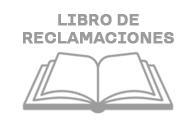The Inca civilization, with its awe-inspiring architecture and intricate society, was equally renowned for its unique religion. In this comprehensive guide, we'll explore the world of Inca gods, their historical significance, the rituals that adorned their worship, and the sacred animals that played a vital role in this ancient belief system.
What will you find here?
- The Inca religion
- History of the Inca religion
- Rituals and Ceremonies
- What are the Inca Gods?
- Sacred animals in the Inca religion
- What are the Inca Gods?
- Sacred animals in the Inca religion
- What happened to the Inca religion after the Spanish conquest?
The Inca religion
The Inca religion was a complex and intricate belief system that permeated every aspect of Inca society. It revolved around the worship of a pantheon of deities, rituals, and offerings to maintain harmony with the natural world.
History of the Inca religion
The Inca religion has its roots in the earlier Andean cultures but reached its zenith during the Inca Empire's rule. It was a syncretic belief system that blended local traditions and deities with the divine rulership of the Sapa Inca.
Rituals and Ceremonies: Capac Cocha, Inti Raymi, and Capac Raimy
The Inca religion was punctuated with rituals and ceremonies that honored the gods and ensured the empire's prosperity. Three of the most significant rituals were:
- Capac Cocha: A ritual of water offerings to honor the goddess Mama Cocha and seek her blessings for fertile lands.
- Inti Raymi: The grandest Inca festival celebrated the sun god Inti and marked the winter solstice.
- Capac Raimy: A harvest festival dedicated to Pachamama, the earth goddess, to ensure bountiful crops.
What are the Inca Gods?
The Inca pantheon was rich and diverse, reflecting the empire's connection with the natural world. Some of the prominent Inca gods included:
-
Viracocha: The supreme god, creator of all things.
-
Inti: The sun god, symbolizing life and sustenance.
-
Pacha Mama: The earth goddess, revered for fertility and agriculture.
-
Pachacamac: A coastal god associated with earthquakes.
-
Mama Cocha: The sea goddess, guardian of oceans.
-
Mama Coca: Goddess of health and happiness.
-
Supay: The god of death and ruler of the underworld.
-
Mama Quilla: The moon goddess, associated with fertility.
-
Mama Sara: Goddess of grain and agriculture.
-
Illapa: The god of thunder and lightning.
-
Coyllur: Star goddess, associated with celestial bodies.
-
Wasikamayuq: The creator god of animals and plants.
- Apus: Sacred mountain spirits, protectors of the land.
Sacred animals in the Inca religion
The Inca religion also recognized the spiritual significance of animals, with some creatures considered sacred:
-
Condor: Symbol of the upper world.
-
Puma: Represented the earthly realm.
-
Snake: Associated with the underworld.

What happened to the Inca religion after the Spanish conquest?
The Inca religion gradually declined after the Spanish conquest, as the Spanish imposed Christianity on the indigenous population. However, some elements of Inca spirituality continue to exist in Andean traditions.
Were the Inca gods based on natural elements and celestial bodies?
Yes, many Inca gods were closely tied to natural elements and celestial bodies, reflecting the Inca's deep connection to the environment.
Are there any modern-day celebrations that honor Inca gods and traditions?
Yes, several festivals and ceremonies in the Andean region still pay homage to Inca gods and incorporate elements of the ancient religion, blending them with contemporary beliefs.












